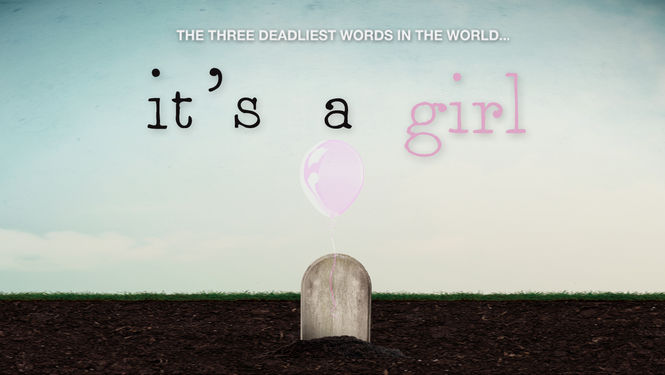Evan Grae Davis has traveled the world with camera in hand for nearly two decades, advocating for social justice through writing and directing short documentaries and educational videos mobilizing support for non-profits and NGO’s championing the cause of the poor and exploited. Evan has consulted with and worked along side over 100 regional, nation and international organizations, helping them tell their stories and mobilize support for their cause. Evan’s passion today is to leverage the power of documentary storytelling to confront culture and inspire change. You can connect with Evan at www.evangraedavis.com. Below, you will find his input on Social Action Documentaries – his most recent work titled “It’s a Girl” is an impressive film that deals with gendercide in India and China.
Seven Distribution “Musts” For A Social Action Documentary
It’s a Girl was our first experience with producing and distributing a feature length documentary film. Now, a year-and-a-half after release, looking back at over 500 screenings in 20 nations, including the British and European Parliaments and on Capitol Hill in Washington, DC; with almost half a million people joining our cause to end gendercide in India and China; and with It’s a Girl doing great on DVD, iTunes, Netflix and Hulu, here are seven factors that I believe contributed to our success:
1. Choose a strong, unique topic (and, of course, make a great film).
It’s a Girl was not the film we set out to make, but when we stumbled upon the issue of gendercide while traveling for our original concept, and discovered that nearly 200 million women were missing in the world today as a result of gendercide, we began searching for other documentaries, books, articles, etc., and found very little on this massive human rights injustice. We were fortunate enough to discover a topic whose time had come. The timing and nature of the issue featured in the film had a lot to do with its success.
2. Budget at least as much for distribution as you spend on production.
This was something I was told early on in my research by other successful filmmakers, and I can’t tell you how many others I met who had great films that went nowhere because their budget for distribution was an afterthought.
3. Don’t put all your eggs in the Film Festival basket.
Film festivals can be important opportunities to gain exposure with distributors. But we didn’t do all that well in film festivals. We submitted It’s a Girl to dozens, including the major ones. We ended up as official selections in a couple of key international human rights film festivals, including Amnesty International’s human rights film festival, but none of our distribution success was significantly impacted by film festivals.
4. Get help! Don’t try and go it alone.
The best decision we made was to spend the money and bring on a consultant. In our case, indie film distribution guru Peter Broderick really delivered. He was expensive, but worth every dollar. Through his endorsement of our film, we landed deals with several distributors who specialize in specific markets, including, screening campaigns, educational, international broadcast, digital, etc.
5. Know your goals; who do you want to reach and what is the response you desire?
We knew up front that we wanted to make a social action film with the goal of educating and mobilizing a movement, even if that meant less income. So Peter recommended we bring on Picture Motion, who specializes in creating action and screening campaigns around social action films. Their team did an amazing job setting up our campaign and helping us reach out to networks and groups who would be a natural fit for our cause.
For a full year, the only way to see the film was to attend a screening or hold a screening of your own in your community. As a result, our action and screening campaign has been robust– something that may not have happened if we released on DVD and VOD right out of the gate.
6. Split distribution rights.
Rather than handing over all distribution rights to a one-size-fits-all agent, circumscribe rights to agents who specialize and can perform best for you in each area. Determine the scope, terms and exclusivity rights granted to each distribution partner. Work together to design contracts that benefit both parties and incentivize partners to work hard to achieve results.
7. Retain direct sales rights.
Make sure you retain domestic and international rights to sell DVDs, digital downloads and streaming from your website, as well as theatrical and semi-theatrical screening rights.
This is far from an exhaustive list, and we are still learning. Make sure you get advice specifically tailored to your film and distribution goals.
______________________

